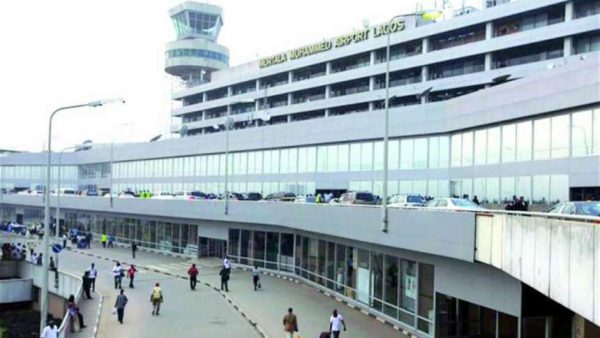Understanding ECOWAS Common External Tarrif (CET) And Its Implementation In Nigeria

Shippers Guide is the learning page of MMS Plus. Here we answer the five W’s and H of several issues in the shipping industry. This week’s edition focuses on the ECOWAS Common External Tarrif (CET) and its implementation In Nigeria.
Article 3 of the Economic Community of the West African States (ECOWAS) revised treaty highlights one of the main objectives of ECOWAS as promoting economic integration in the region by, among others, creating a common market. As a result, the 15 member states of ECOWAS on 25th October, 2013 adopted the ECOWAS Common External Tariff (CET) The implementation of the CET on July 1st 2015, six months later. The adoption of a uniform regime of customs duties import quotas, preference or other non-tariff barriers to trade (applicable to all goods from outside the member states entering the territory, regardless of which country they are entering) will, hopefully, help address the problem of cross-border smuggling and dumping of goods while bringing economic benefits to the people of the sub-region. Along with the ECOWAS Trade liberalization scheme (ETLS), which guarantees the free movement of goods within the sub-region, the scheme will facilitate trade achieve customs union and advance greater sub-regional integration.
CET Tariff Categories:
The CET comes with a five band tariff structure. They are:
Category 0: basic social goods with 0% tariff.
Category 1: basic goods, basic raw materials, capital goods and specific inputs attracting 5% tariff.
Category 2: intermediate goods with 10% tariff.
Category 3: final consumer goods and other product not classified elsewhere with tariff of 20%.
Category 4: cover specific goods for economic development and attracts 35% tariff.
Implication of the ECOWAS CET:
Any regional grouping which seeks to ‘integrate’ must go through 5 levels of association:
Free Trade Area
Custom Union
Common market
Economic Union
Political Union
Under the ETLS, ECOWAS was effectively a free trade Area (FTA). A Common External Tariff (CET) arrangement means it has entered the level of a Customs Union .Under the FTA, trade may have been free, but the different countries had different tariffs for trading with countries outsides. ECOWAS .CET implies that uniform tariffs are applied to third countries. CET is, therefore, the transfer of Tariff policy power away from individual member State to the grouping for use as instrument for the intensification and deepening of cooperation and integration process CET Implementation by Member State:
The CET is being implemented by member countries in phases. This first phase covers a period of five years from 2015 to 2019, to allow for all necessary adjustments by individual member state after which the scheme is expected to enter a more advanced phase with no flexibility. During the first phase, member states are permitted to apply temporary provision such as the Import Adjustment Tax (IAT) and special protection Tax (SPT) to allow them adjust to the tariff system. The application of the SPT is contingent on the behaviour of import volumes and import prices following implementation of the scheme. The IAT, on the other hand, is designed to help to adjust to a lower tariff structure undergo a smooth transition.
Eight member States comprising of Benin ,Burkina Faso, Cote d’Ivoire, Mail, Niger, Nigeria, Senegal and Togo started implementation in 2015, while others postponed it for various reasons .For Ghana, it was due to constrains arising from parliamentary procedures which commenced in march 2016. Guinea, Liberia and Sierra Leona postponed CET implementation due to the Ebola epidemic. The delay caused by the late provision of Portuguese version of the CET documents prevented Cape Verde and Guinea Bissau from implementing it and in the Gambia, the delay was due to technical problems of integrating CET into the computerized customs system.
Status of CET implementation in the Sub –Region
Studies carried out since implementation began in 2015 have shown that CET has had varying impacts in terms of trade liberalization in different member states. In most of the UEMOA member States, the average level of implementation of CET is about 12.0%.
Nigeria has the highest level of implementation at 29.1%,(the country has also reduced its tariff bands from 20 to 5 CET bands) for Ghana, it is 13.1%, sierra Leone IS 13.7%, the Gambia 12.8% and Guinea is 6.5%. Status of CET implementation in Nigeria
As mentioned earlier, Nigeria started the implementation of CET in July 2015 with some temporary supplementary protection measures:
- An import Adjustment Tax (IAT) which involves additional taxes of up to 30% on 177 tariff lines, to offer temporary protection to selected products from its domestic industry. The tax as V announced was to be phased out in 3 or 4 years
- A National List (for special protection) consisting of items whose import duty rates were reviewed to encourages development in strategic sector of the economy- preferential duty allocation.
- An import prohibition List applicable only to certain goods originating from non –ECOWAS member state. More importantly, Nigeria demanded for the creation of a fifth tariff band of 50% as an addition to the existing UEMOA rate. This request was made when Nigeria realized that its commitment to the UEMOA CET was made without requisite technical analysis in terms of research or prior consultation with stakeholders such as the manufacturers, farmers, traders and others in the organized private sector. The UEMOA tariff rate is not protective of a rapidly growing economy like Nigeria with her prospects and plans for industrialization and there were loud crises from the Nigeria stakeholders. The call for a fifth band immediately gained the support of prominent private sector and civil society organization throughout West African. Unfortunately, though the request was made good faith by Nigeria, it snowballed into a controversy of some sort as some countries in West Africa expressed some misgiving about Nigeria’s intention and began a campaign of silent rejection of the request. Notwithstanding, a fifth band at 35% as against the proposed 50% was eventually adopted.
The CET implementation plan in place was for the import Adjustment Tax, the National List to be subjected to annual downward reviews for 5 years ending in 2019 with their total eradication. The specifics were expected to be contained in the 2016 fiscal policy of government.
CET administration in Nigeria
In the absence of a constituted National Tariff Review Board, a Tariff Technical committee (TTC) under the Fiscal Policy Department of the Federal Ministry of Budget and National Planning is responsible for tariff and setting, tariff policy management and tariff implementation in Nigeria.
The TTC member organizations include;
Federal Ministry of Finance
Federal Ministry of Industry, trade and investment.
Nigeria Customs Service
Federal Ministry of Agriculture and RURAL Development
Rural Development
Raw Material Research and Development Council
Representatives of the Manufactures’ association of Nigeria (MAN)
Representative of the National Association of chambers of Commerce, industry, Mines and Agriculture (NACCIMA) Conclusion: There is certainly some misconceptions about the CET, most of which are unfounded. Amongst other it is alleged that low tariff may lead to cheaper imported goods which tend to cripple local industrial and agricultural production, discourage new investment and create very little local employment. The scheme does not open up the ECOWAS sub-region for foreign products. Instead, it only harmonizes tariff for imports from outside the sub- region. However, in order to ensure that production does not suffer in any of the member countries due to unexpected influx of imports, CET is accompanied by some palliatives to help moderate adjustment costs, provide assurance of short –term relief, offer escape clause and gain political support for its sustainability. These measures are: Trade Defence Measures (TDMs), Trade Remedy Measures (TRMs) and Contingency Protection Measures (CPMs). The rationale behind these measures are that CET leads to trade phased process hence the accompanying measures are needed as a buffer between adjustment cost and benefits. If costs are better than benefits, the measures can serve as balancing factor.
Culled from the Nigerian Shippers’ Council Bulletin Vol.2 No.1







